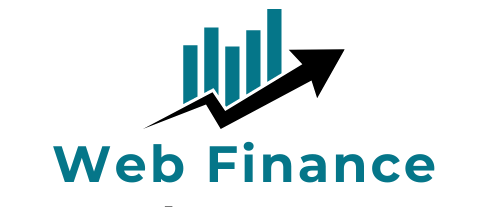Building a diversified investment portfolio is a fundamental strategy for financial success. While the options for commercial investments are vast, it’s essential to explore a range of opportunities to ensure your portfolio remains resilient and profitable. In this article, we’ll delve into ten different commercial investment ideas, each with its unique characteristics and potential for growth.

Commercial Property Investment
Commercial property investment has long been a cornerstone of savvy investors’ portfolios. This strategy involves acquiring and managing properties used for business purposes, such as office buildings, retail spaces, warehouses, and industrial facilities. Here are some compelling reasons why commercial property investment should be on your radar:
a. Steady Rental Income: Commercial properties often yield consistent rental income due to long-term leases signed by businesses. This provides a reliable stream of income, making it an attractive option for income-focused investors.
b. Potential for Capital Appreciation: Over time, the value of commercial properties tends to appreciate. Factors like location, property improvements, and market conditions can contribute to substantial capital gains.
c. Diversification: Commercial real estate offers diversification benefits, reducing the risk associated with a one-dimensional portfolio. It typically has a low correlation with other asset classes like stocks and bonds.
d. Tax Advantages: Investors can leverage various tax benefits, including deductions for mortgage interest, property depreciation, and property management expenses, to optimize returns.
e. Inflation Hedge: Commercial properties can act as a hedge against inflation, as rental income often increases over time, helping preserve the real value of your investment.
f. Professional Management Options: You have the flexibility to manage the property yourself or hire professional property management services, freeing up your time and reducing management-related stress.
g. Variety of Investment Types: Commercial property investment offers a range of property types to match your risk tolerance and financial goals, from stable, income-producing assets to more speculative developments.
While commercial property investment has numerous advantages, it’s crucial to conduct thorough research, assess market conditions, and seek expert guidance from Ontario commercial mortgage brokers when venturing into this arena.
Stock Market Investments
Investing in stocks of publicly traded companies remains one of the most accessible and potentially rewarding commercial investment ideas. Here are some key considerations for stock market investments:
a. Liquidity: Stocks are highly liquid assets, making it easy to buy and sell shares in the market.
b. Diversification: Investors can diversify their stock portfolios across various industries and sectors to spread risk.
c. Dividend Income: Many stocks pay dividends, providing a source of regular income in addition to potential capital appreciation.
d. Growth Potential: Growth stocks can offer significant long-term capital appreciation if the companies they represent perform well.
e. Risk Management: Risk-averse investors can employ strategies such as value investing or dividend investing to mitigate risk.
Startups and Private Equity
Venturing into the world of startups and private equity investments can be a high-risk, high-reward endeavor. These investments involve funding early-stage companies or private businesses. Here’s what you need to know:
a. Potential for High Returns: Successful startups can yield substantial returns, especially if the company goes public or is acquired.
b. Diversification: Private equity allows you to diversify your portfolio beyond traditional asset classes.
c. Risk Tolerance: These investments are suited for those with a higher risk tolerance and a long-term investment horizon.
Bonds and Fixed-Income Securities
Bonds and fixed-income securities provide stability and regular income for investors seeking a more conservative approach. Key points to consider include:
a. Regular Income: Bonds pay periodic interest, offering a predictable income stream.
b. Principal Preservation: Bonds return the principal amount at maturity, providing capital preservation.
c. Risk Management: Different types of bonds, such as government bonds and corporate bonds, offer varying risk levels.
Franchise Ownership
Owning a franchise can be an attractive commercial investment, particularly if you’re interested in entrepreneurship without the risk associated with starting a new business from scratch. Here’s why franchise ownership can be a compelling option:
a. Proven Business Model: Franchises come with a tested business model and brand recognition, reducing the risks associated with startup ventures.
b. Royalties and Fees: Franchisees earn income through royalty fees and franchise fees paid by individual franchise operators.
c. Support and Training: Franchisors typically provide training, marketing support, and ongoing guidance to franchisees.
Real Estate Investment Trusts (REITs)
Real Estate Investment Trusts (REITs) offer a convenient way to invest in real estate without owning physical properties. Here are some advantages of investing in REITs:
a. Liquidity: REITs are traded on stock exchanges, providing liquidity to investors.
b. Diversification: REITs often hold portfolios of various properties, offering diversification benefits.
c. Dividend Income: REITs are required to distribute at least 90% of their taxable income to shareholders, resulting in attractive dividend yields.
Commodities
Investing in commodities like gold, oil, or agricultural products can be a strategic commercial investment. Consider the following:
a. Hedge Against Inflation: Commodities can act as a hedge against inflation, as their prices often rise when the value of currency declines.
b. Diversification: Commodities provide diversification benefits and can help offset losses in other parts of your portfolio during economic downturns.
c. Different Investment Vehicles: You can invest in commodities through futures contracts, ETFs, or physical assets, depending on your preference.
Peer-to-Peer Lending
Peer-to-peer (P2P) lending platforms connect investors with borrowers, allowing you to earn interest on loans you’ve extended to individuals or small businesses. Consider these aspects of P2P lending:
a. Diversification: P2P lending allows you to diversify your investments across multiple loans to spread risk.
b. Regular Income: Interest payments from borrowers provide a steady income stream.
c. Risk Assessment: Evaluate borrower profiles and creditworthiness to manage risk effectively.
Collectibles and Alternative Commercial Investments
Collectibles, such as rare coins, art, vintage cars, and even wine, can be intriguing commercial investments. These alternative assets offer potential for appreciation and diversification:
a. Tangible Assets: Collectibles provide tangible assets that can be enjoyed aesthetically while potentially appreciating in value.
b. Passion Investments: Investing in areas of personal interest can be particularly enjoyable.
c. Specialized Knowledge: In-depth knowledge of specific collectible markets is essential for making informed investment decisions.
Green and Sustainable Investments
Investing in environmentally conscious businesses and sustainable technologies is gaining traction as a responsible commercial investment option. Key considerations include:
a. Impact Investing: Investing in companies with strong environmental and social practices can align your portfolio with your values.
b. Evolving Markets: Green and sustainable sectors continue to grow as the world shifts toward environmentally friendly practices.
c. Risk Management: Evaluate companies’ sustainability practices and financial viability when making investment choices.
In the ever-evolving world of investment, commercial investment ideas offer a range of opportunities to grow wealth, secure financial stability, and achieve long-term goals. Whether you opt for commercial property investment, stock market investments, startup ventures, bonds, franchise ownership, REITs, or commodities, each avenue comes with its unique set of benefits and risks. It’s crucial to conduct thorough research, seek professional advice when needed, and align your investment choices with your financial objectives and risk tolerance.
Remember that successful commercial investment requires a well-thought-out strategy, patience, and a long-term perspective. Diversifying your financial portfolio across various commercial investment ideas can help you mitigate risks and maximize potential returns. Ultimately, the key to successful commercial investment lies in informed decision-making, adaptability, and a commitment to financial growth.















